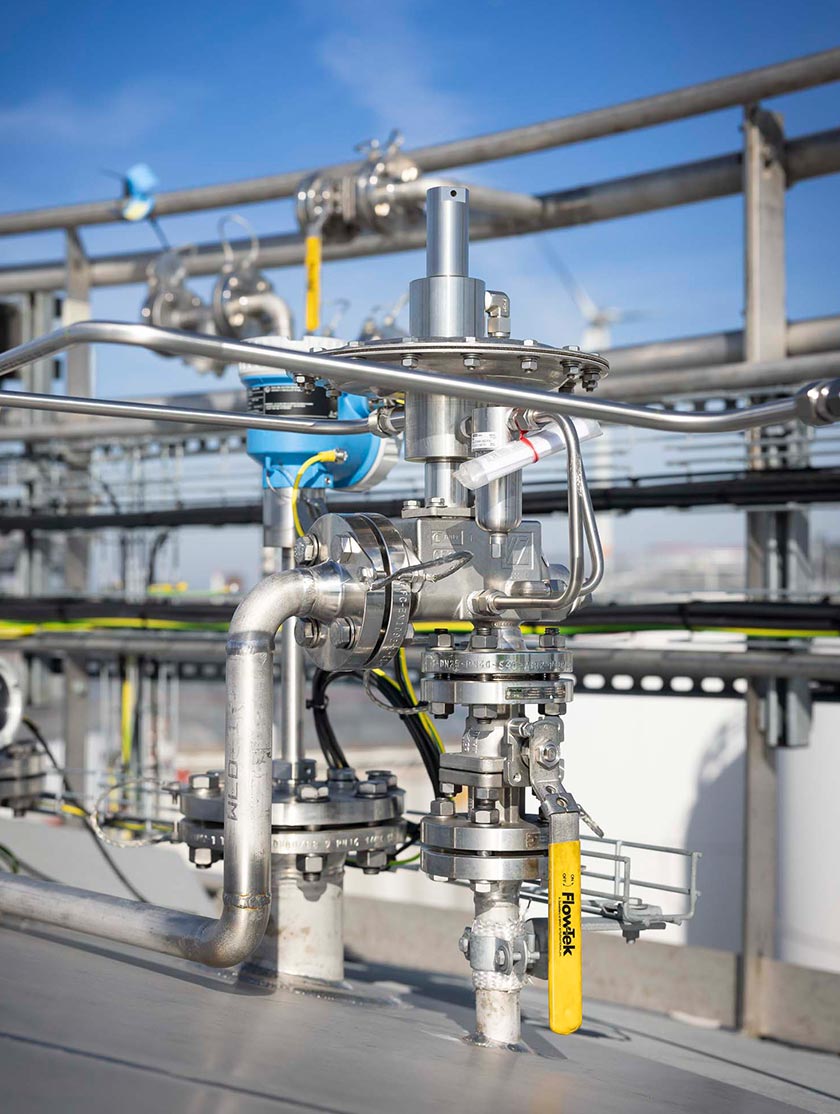Maximizing Safety: Understanding Back Pressure in Selecting Flame Arrestors
Flame arrestors are important safety devices used in various industrial processes to prevent the spread of flames and potential explosions. They work by inhibiting the flow of ignited gas or steam, extinguishing the flame and reducing the risk of a hazardous event.
Back Pressure and Flame Arrestors
Back pressure is essential to consider when selecting a flame arrestor. This refers to the force of a gas or steam stream moving in the opposite direction to the desired direction. This can be due to a variety of factors, including the length and complexity of the piping system, changes in elevation, and the use of flow-restricting devices such as valves and elbows. Back pressure can significantly affect the proper operation of the flame arrestor and increase the risk of fire or explosion.
Considerations for Selecting a Flame Arrestor
To account for back pressure when selecting a flame arrestor, there are several important considerations to take into account.
- First, the type of flame arrestor must be carefully selected based on the specific application and potential back pressure levels. Generally speaking, there are two types of flame arrestors: deflagration and detonation. Deflagration flame arrestors are designed to withstand low pressure situations, while detonation flame arrestors can withstand higher pressures and velocities.
- Secondly, the size and diameter of the piping system must also be carefully considered. In cases where there is a significant risk of back pressure, a larger diameter flame arrestor may be required to withstand the additional force.
- In addition, the location of the flame arrestor must be carefully selected to minimise the effects of any potential back pressure.
- Finally, the possibility of particulate or liquid accumulation in the piping system must be considered. This can cause blockages or restrictions that can further increase back pressure and affect the proper operation of the flame arrestor. In some cases, additional devices such as filters or separators may be necessary to mitigate this problem.
Summary
In summary, when selecting a flame arrestor, special consideration should be given to the potential for back pressure and appropriate measures taken to mitigate its effects. By considering the type of flame arrestor, the size and diameter of the piping system, and the potential for contamination build-up, the risk of a hazardous event occurring can be significantly reduced.
Looking for The Right Flame Arrestor? Get Expert Help Choosing the Ideal Arrestor Engineered To Fit Your Needs |
Cashco’s flame arrestors are engineered to stop the propagation of flames in gas piping systems, helping protect equipment, personnel, and facilities. For more information about Cashco's arrestors, view all models here .
Cashco is dedicated to ensuring you select the best solution for your tank protection needs. Need help choosing the right flame arrestor? Contact us and our experienced team will gladly assist you in finding the ideal product!
Why Flame Arrestors Matter |
Cashco Flame Arrestors are specifically engineered to match the explosive mixtures Maximum Experimental Safe Gap, in order to ensure complete extinction of the flame.



